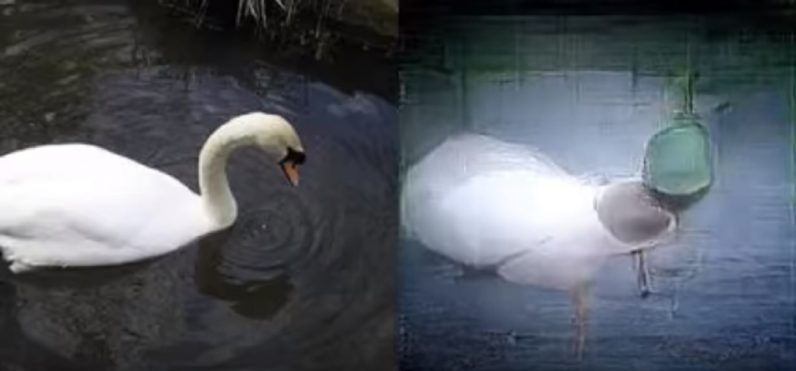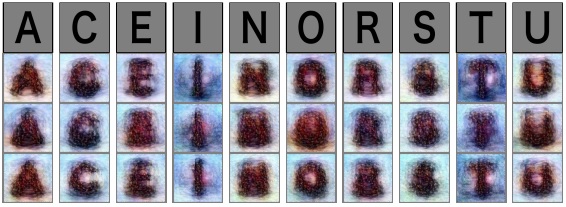Computer taught to visualize human visual images

On the left - an image of a swan, on the right - an image passed through human consciousness and redrawn by a computer
Reading thoughts, using machines or telepathic abilities has been described many times in many science fiction works, not to mention fantasy. Technologies are now developing at a very rapid pace, but the reading of thoughts is still far from realization, although closer than, for example, half a century ago.
Artificial intelligence ( weak form ) helps bring the desired moment. Japanese scientists were able to implement the project, which developed the technology of reading human brain activity with visualization of what he was thinking. True, fleeting thoughts cannot be analyzed yet. It is about visualization of visual images that appear as a result of the concentration of human attention in the image.
The results of their research, scientists have published in a scientific article titled "Deep reconstruction of images by analyzing brain activity." For 10 weeks, scientists worked out a technique of visualizing images based on the activity of the human brain, which at the same time was looking at some picture or video. Brain activity was analyzed in real time.
In some cases, after a person carefully looked at the image, he was asked to imagine the picture he saw as brightly as possible. After processing the indicators of brain activity taken with special equipment using a computer, in many cases it was possible to restore the image referred to above. Of course, its quality was not too good, but you can understand what a person saw.
In some cases, the restored images were not too similar to the original. For example, a picture of an owl, "decoded by computer", looks like a creature from a nightmare. But what to do - the technology is still far from perfect.
AI training was conducted on the basis of many thousands of examples of the activity of the brain of a person who looked at an image known in advance by a computer. As a result, artificial intelligence has learned to determine what a person is looking at at a particular point in time. For the most part, the neural network simply makes assumptions, and builds an image based on them. The main thing is that the machine is able to conduct analysis in real time.
In the end, you can decipher both individual letters and much more complex images that were shown above.

With the passage of time, scientists hope to refine the technology so that the restored images are of higher quality and more resemble the original. Maybe all of this is the beginning of a great work, during which scientists will learn to create systems that can visualize the images that appear in a person’s head (in a dream or in reality). Moreover, these images will be fleeting, and not settled.
True, in order to achieve this, you need to do a great job. The work of scientists is not too new - for example, similar projects were carried out in 2011 , 2013 and other years. True, the quality of the reconstructed image is now better, plus it is color, not black and white.
In previous studies, the method of functional magnetic resonance tomography was used to remove the signal. This is a kind of magnetic resonance imaging, which is conducted to measure changes in the characteristics of blood flow. There is a slight delay between neural activity and changes in blood flow, which can be seen in the demo video above.
Whatever it was, but to a real mind reading is still far away. And, by the way, it’s worth thinking if scientists can really learn how to accurately reconstruct the visual images that appear in a person’s head, how this can affect privacy. Personal data will not be protected by anything. Of course, it’s just not possible to “remove” images from a person’s passing by. But over time, probably, this problem will be solved. And then we will have to take care of protecting our own thoughts in the same way as today we care about protecting our data on the network and on local PCs.
All Articles